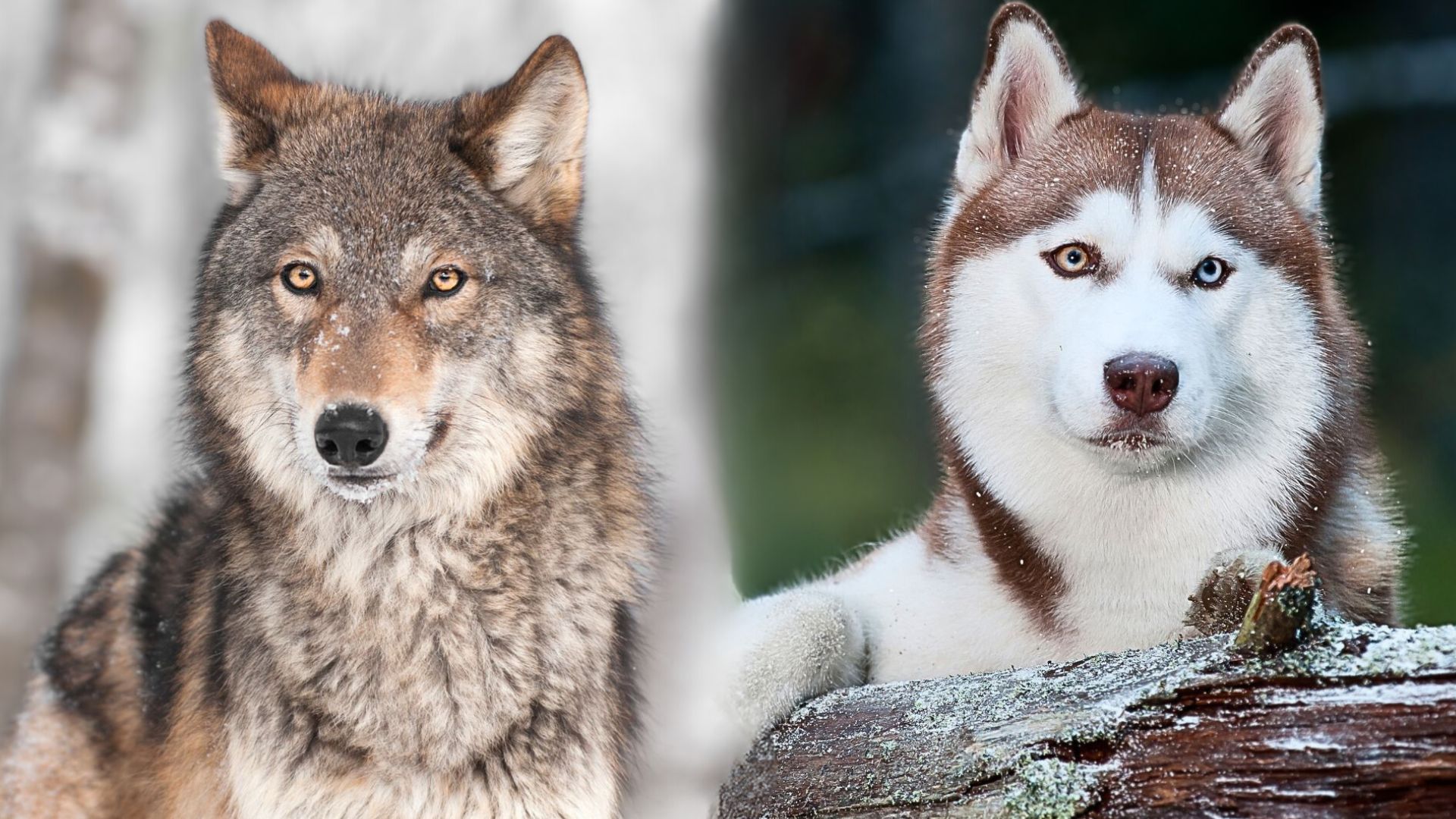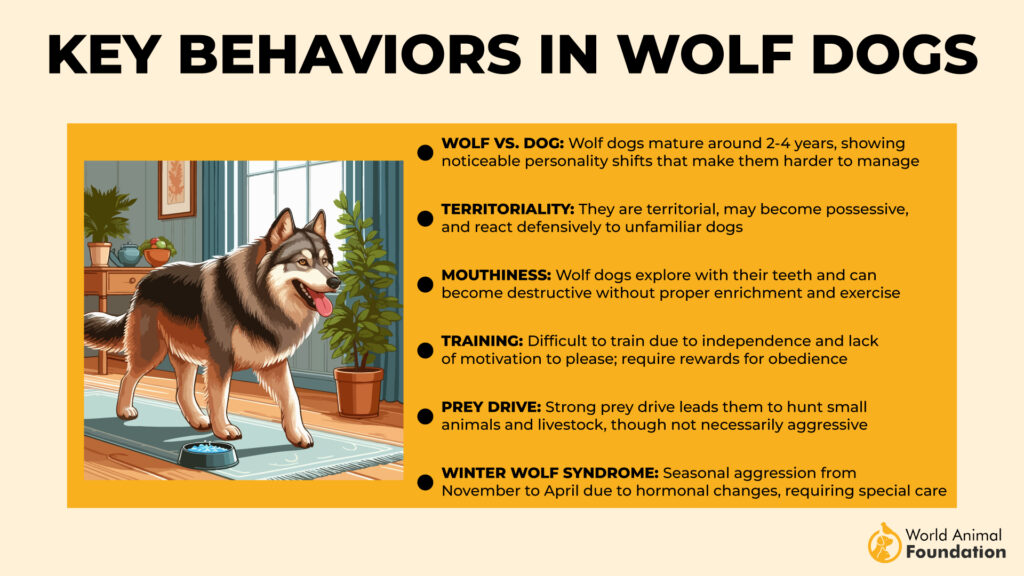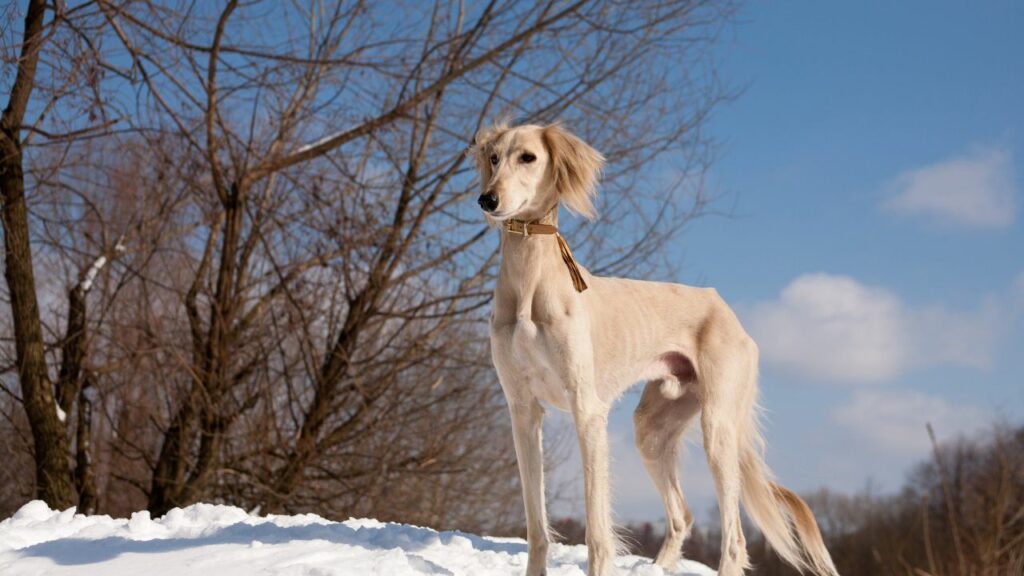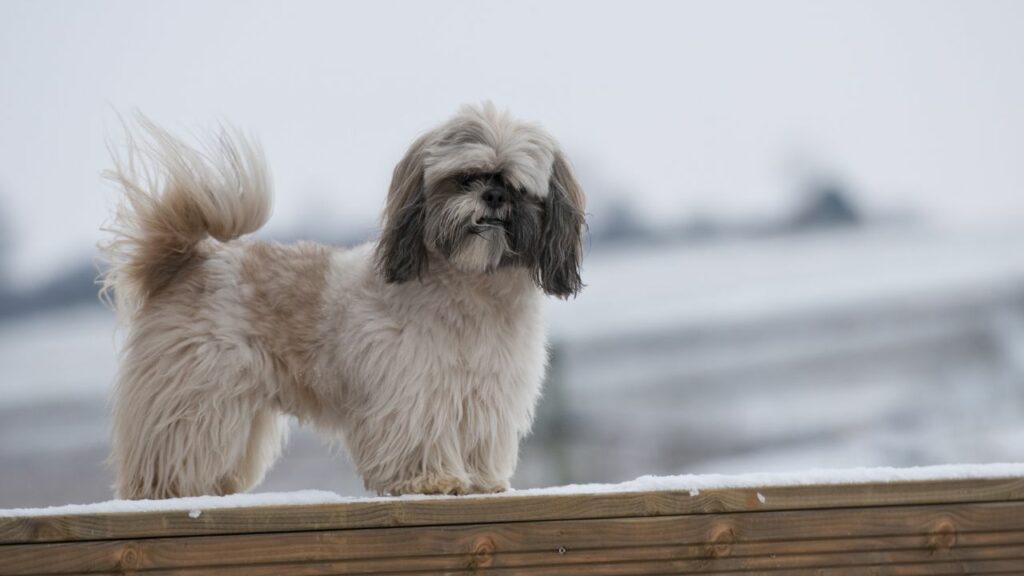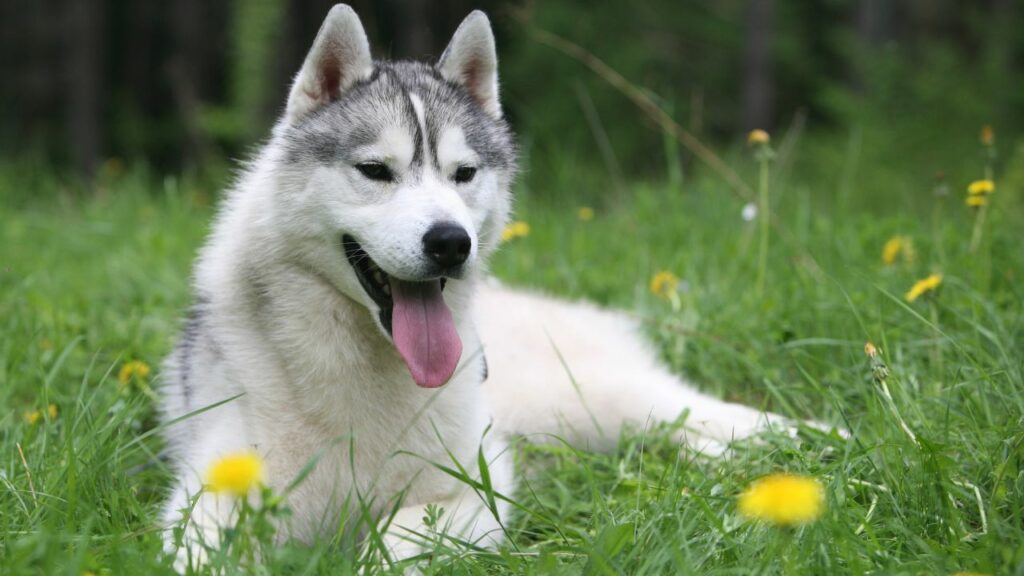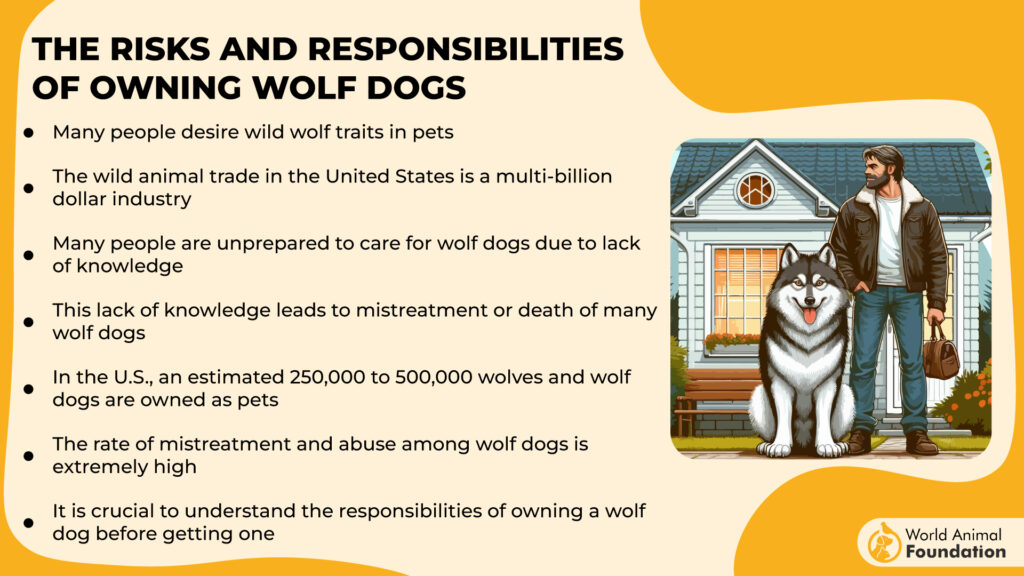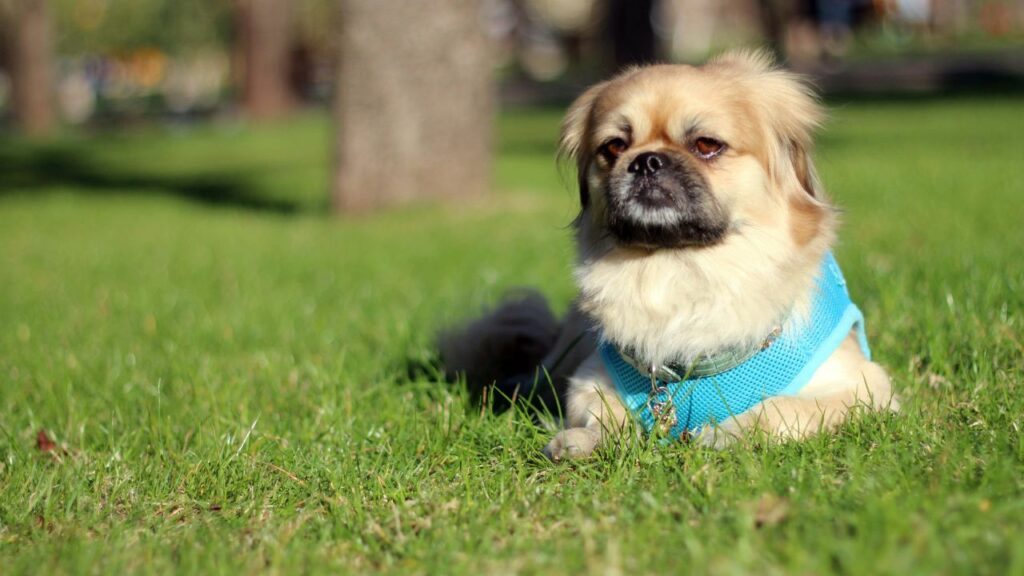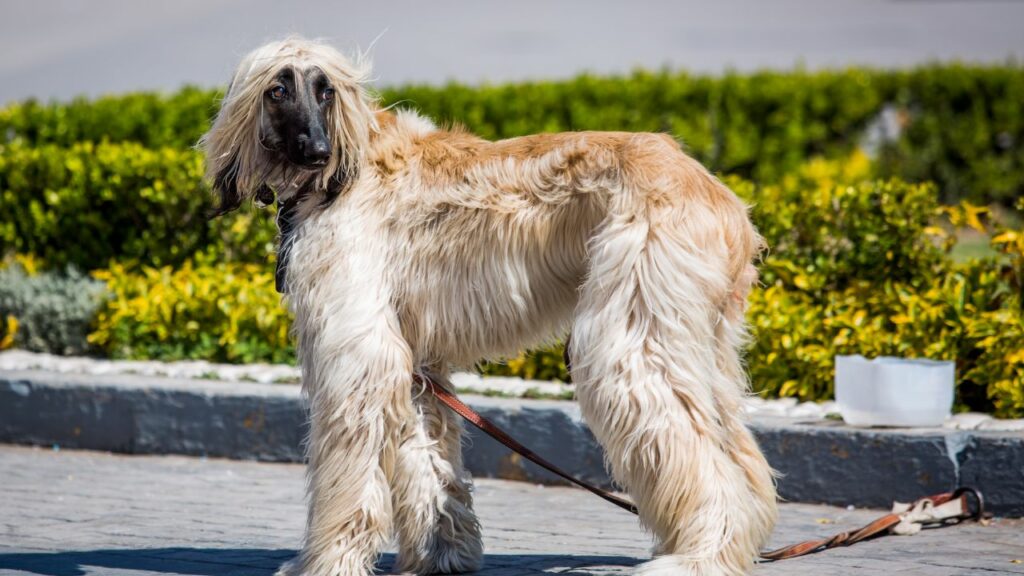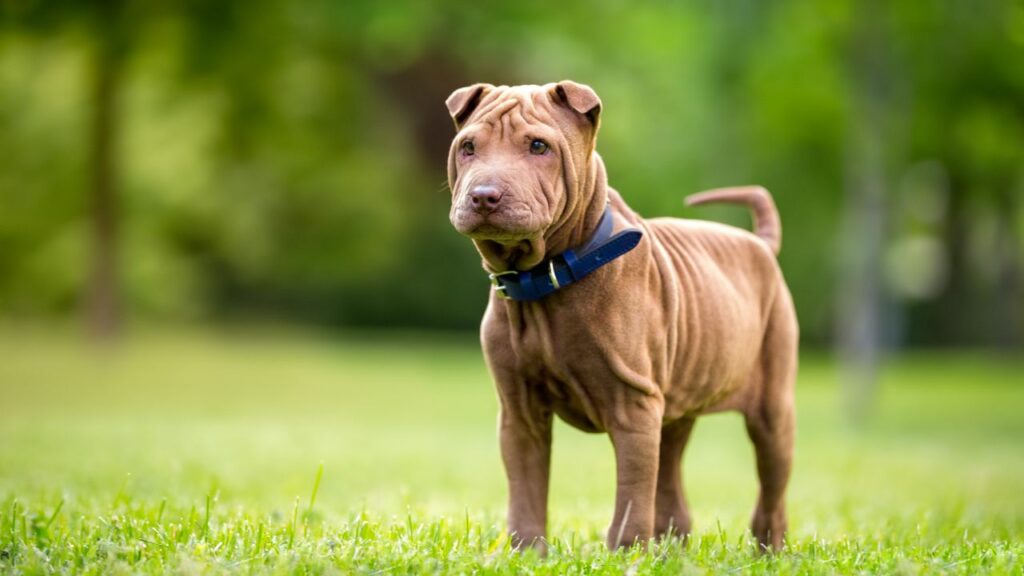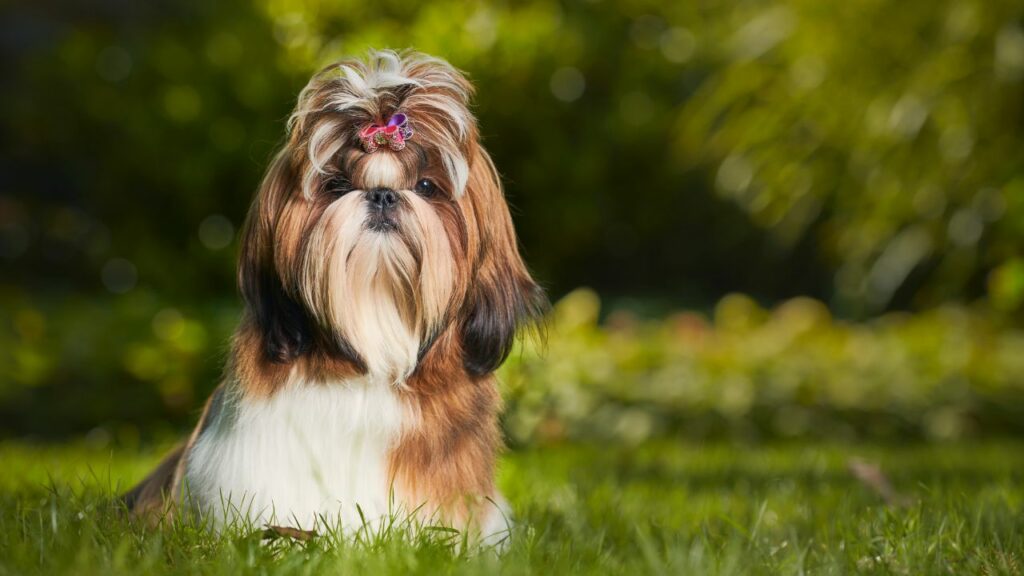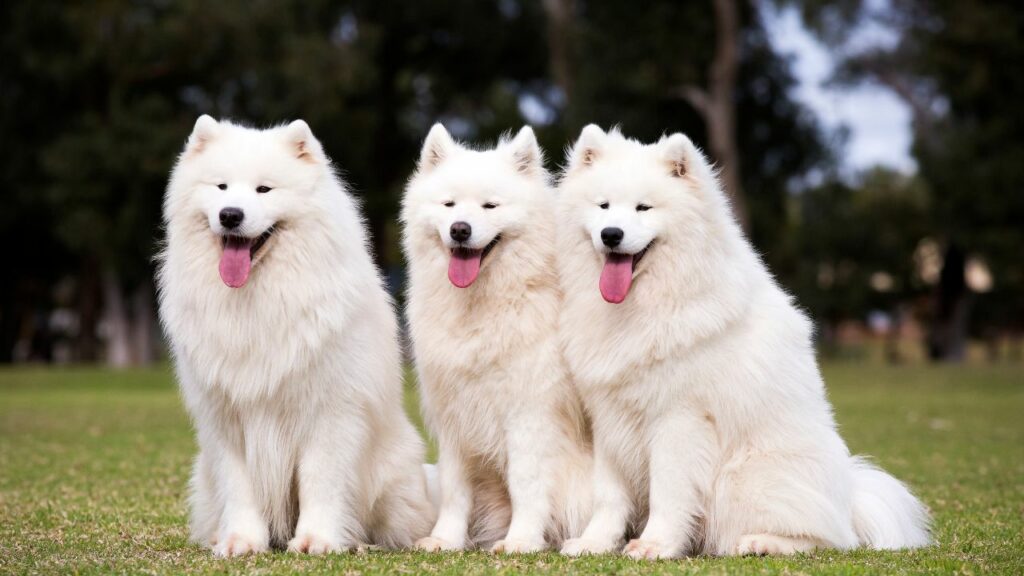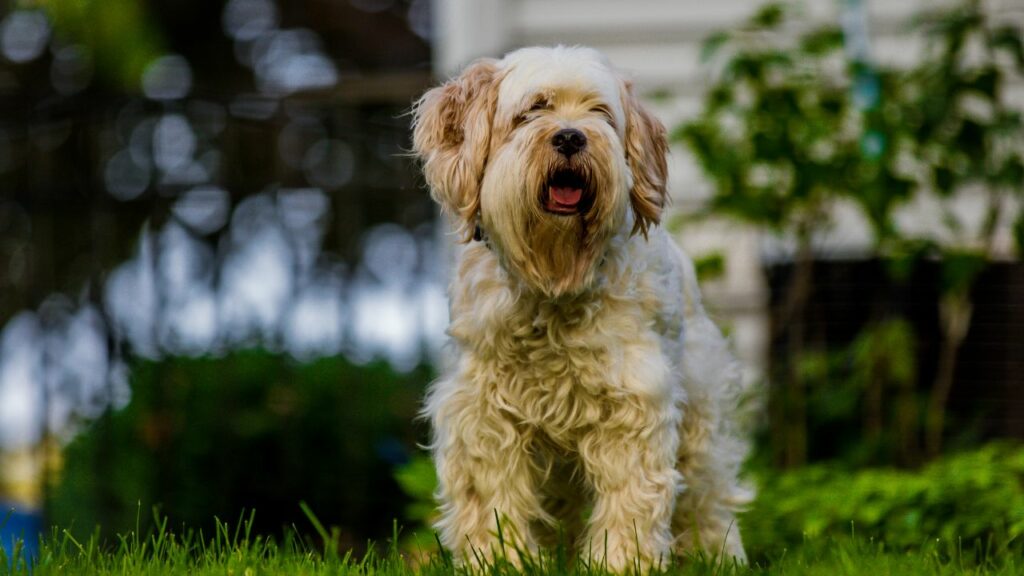From the haunting howl echoing a wolf’s cry to the playful pounce of a family pet, the link between domestic dogs and their wild ancestors remains undeniably captivating. While all dogs descend from wolves, certain breeds retain a closer genetic connection, exhibiting striking physical resemblances and sometimes even primal behaviors. Journey with us into the fascinating world of canine lineage as we explore nine dog breeds whose DNA whispers tales of their wolfish heritage. Prepare to be amazed by their beauty, intrigued by their history, and surprised by just how much wolf resides within man’s best friend.
Dogs may be our loyal companions today, but their roots are deeply intertwined with wolves. While we know and love our domesticated pups, it’s fascinating to remember that all dogs, big or small, fluffy or sleek, share a common ancestor with wolves. These two members of the canine family may have taken different evolutionary paths, but the bond between them is undeniable.
Dogs were domesticated over 15,000 years ago, making them one of humanity’s first and most important companions. Despite their differences, many dog breeds still carry traits that remind us of their wild wolf heritage, from their appearance to their instincts. For those who love the idea of having a dog that resembles a wild animal, there are several breeds that look strikingly similar to wolves.
Here, we’ll explore some of the most popular dog breeds closely related to wolves, showcasing their unique connections to their wild ancestors.
Dog Breeds Closely Related To Wolves
1. Saluki
The Saluki, originally from the Middle East, is one of the oldest dog breeds and shares a close genetic link with wolves. Bred by ancient Egyptians for hunting, DNA analysis confirms the Saluki as one of the earliest dog breeds descended from wolves.
One of their unique traits is their tendency to “sing,” a high-pitched howl that they use when sensing danger, feeling anxious, or bonding with a family member. Salukis can be somewhat independent and are easily bored with repetitive training or inactivity. They are sensitive dogs that don’t respond well to harsh discipline, making a gentle and patient approach necessary.
While they are intelligent and affectionate with family members and other pets, Salukis are also known for being incredibly gentle with children. These dogs often form a close bond with one specific family member, adding to their loyal and loving nature.
2. Lhasa Apso
The Lhasa Apso, originally from the cold mountains of Tibet over 4,000 years ago, is one of the oldest dog breeds and shares a close genetic link to ancestral wolves. Tibetan Monks used these dogs to guard their holy temples, serving as the second line of defense after the larger Tibetan Mastiffs who watched the entrances.
While Lhasa Apsos are small, they are confident and can be assertive, so it’s important to establish yourself as the pack leader early on. Without clear boundaries, they may bark excessively, climb on furniture, and experience separation anxiety when left alone.
Early socialization is crucial for Lhasa Apsos to prevent aggression toward other animals or strangers. Although they are naturally wary of unfamiliar people, they should learn to tolerate regular visitors with proper training. When well-socialized and trained, Lhasa Apsos become loyal, loving, and comical companions. They enjoy being around children and look forward to daily walks, making them a delightful addition to any household.
3. Siberian Husky
The Siberian Husky is a dog breed that closely resembles wolves, both in appearance and genetics. With its thick double coat, erect triangular ears, and striking markings, it’s easy to see the connection to its wild ancestors.
One of the oldest dog breeds, the Husky was bred to pull sleds at incredible speeds across the harsh, frozen terrain of the Siberian Arctic. Their dense undercoat and long outer guard hairs keep them warm, much like wolves in cold climates.
Though Siberian Huskies are known for their hardworking nature, they are also playful and loyal companion dogs. However, their independent streak makes them a bit challenging to train, and they love to run off when given the chance. While they howl like wolves, Huskies also tend to bark, setting them apart from their wild relatives. Despite their strong-willed personality, they make loving and energetic pets for the right owners.
4. Pekingese
The Pekingese is one of the oldest dog breeds, with a history that stretches back over two thousand years. Remarkably, they are thought to be more closely related to wolves than many other breeds. Often called “lion dogs” due to their thick fur, Pekingese are small but adaptable, thriving in both apartments and houses. These charming and affectionate dogs form strong bonds with their owners and love spending time by their side.
When it comes to exercise, Pekingese are fairly low-maintenance compared to more active breeds. They still need enough activity to stay healthy, but they’re generally quite relaxed. While Pekingese are intelligent and eager to please, their independent nature may make training a bit challenging, so patience and consistency with reward-based training is key.
According to PDSA, their thick, long fur requires daily brushing to prevent tangles and mats, and many owners opt for professional grooming to keep it manageable. Pekingese do shed a lot, especially during spring and autumn, making them a less ideal choice for owners who prefer a spotless home.
5. Afghan Hound
The Afghan Hound, a close relative of the Saluki, is another ancient breed with strong genetic ties to wolves. Originating in the mountains of Afghanistan, this elegant sighthound is known for its tall, graceful appearance and its striking long, silky coat. Often considered one of the most glamorous dog breeds, the Afghan Hound’s regal looks are matched by its dignified and intelligent personality.
Afghan Hounds are extremely loyal to their owners, but their strong-willed nature can make them challenging to train. Despite their noble demeanor, they have plenty of energy and enjoy being playful and silly with their families.
According to WebMD, these dogs are not low-maintenance and are best suited for experienced owners. While Afghan Hound puppies have short, easy-to-care-for coats, their adult fur requires a lot of grooming to keep it looking its best.
6. Shar-Pei
The Shar-Pei is an ancient breed with deep genetic ties to wolves, originating in the southern provinces of China where they were bred as working companions. While Shar-Peis can make wonderful pets, they aren’t recommended for first-time dog owners due to their strong-willed nature.
These intelligent dogs can be stubborn, and if not properly trained and socialized from a young age, they may become anxious or fearful of strangers. Though Shar-Peis are laid-back and don’t need much exercise, they do enjoy short walks and can adapt well to apartment or small home living.
PetMD points out that they are very affectionate toward their caregivers but can be protective when they sense a threat. With a moderate to high prey drive, it’s important to introduce Shar-Peis to cats and other small animals early on to avoid chasing or herding behaviors.
7. Shih Tzu
The Shih Tzu, despite its small size, shares more DNA with wolves than most other dog breeds, second only to the Nordic spitz group. Believed to have originated in China around 800 BC, this ancient breed is a perfect blend of playful and affectionate. Shih Tzus are bold yet friendly, often getting along well with unfamiliar people, dogs, and other pets. Their playful nature and size make them ideal companions for gentle older children and elderly individuals alike.
While Shih Tzus are fairly high-energy, they can easily switch from playful companions to cozy lapdogs. Like many ancient breeds, they may be slow to obey commands, but with patience and persistence, they learn quickly once they’re willing.
Though they make alert watchdogs, their small size and temperament mean they’re not suited for protection work. Shih Tzus prefer temperate climates, struggling in hot weather due to their short muzzle and being vulnerable to the cold because of their small size.
8. Samoyed
The Samoyed is one of the oldest dog breeds and closely resembles its wolf ancestors. With its thick, fluffy white fur and strong stature, it looks a lot like the Arctic wolves. Originally bred to pull sleds for the Samoyedic people in Siberia, the Samoyed gained worldwide popularity in the late 1800s after Queen Alexandra of England fell in love with the breed.
Their trademark “Samoyed smile” and soft, cloud-like coats make them incredibly charming, though they can weigh up to 65 pounds, so they’re not exactly lap dogs—though they’ll still love to snuggle up close.
Britannica states that Samoyeds are smart, social, and affectionate dogs who thrive on companionship. Like other working breeds, they need plenty of exercise and mental stimulation to stay happy, and they’re known for being quite vocal. Their independent nature can make them a bit stubborn, but with positive, reward-based training, they learn quickly.
9. Tibetan Terrier
Tibetan Terriers are clever and playful dogs with a close genetic link to wolves, originally bred by Buddhist monks in the mountains thousands of years ago. Their loyal, intelligent, and affectionate nature makes them wonderful companions, especially for those who are kind to them. Tibetan Terriers form deep bonds with their families and love being involved in daily activities.
While these dogs can initially be shy or reserved, once they feel comfortable, they become incredibly devoted and loyal friends. Tibetan Terriers generally need moderate physical activity, with regular walks and light play being ideal.
However, some individuals are more energetic and may thrive on longer, more challenging hikes, making them great companions for those who enjoy outdoor adventures. Whether at home or in the wilderness, a Tibetan Terrier is a loyal and loving companion.
Conclusion
Many modern dog breeds, such as the Alaskan Malamute, Shiba Inu, and Siberian Husky, are among the dog breeds closest to wolves genetically. These breeds, with their wolf-like appearance and deep-rooted connections to prehistoric wolf species, are not only some of the oldest living breeds but also retain the qualities of their wild ancestors.
From the powerful sledding dog, the Alaskan Malamute, to the agile Shiba Inu, a Japanese breed, these dogs were once used as working and guard dogs, displaying their strength and loyalty. Despite their close genetic ties to wolves, they have adapted to life as companion dogs in modern homes.
While some of these breeds resemble wolves with their thick coats and strong builds, others are smaller and more suited to family life as companion dogs or lap dogs. Regardless of their appearance, these purebred dogs serve as a living reminder of domesticated wolves, blending the traits of their ancestors with those of modern dogs. Their intelligence, loyalty, and enduring bond with humans make them remarkable companions for those who appreciate their unique mix of history and genetics.
Fascinatingly, despite centuries of selective breeding, the genetic echoes of wolves resonate strongly in several dog breeds. From the regal Siberian Husky to the less-known Swedish Vallhund, these breeds retain physical and behavioral traits reminiscent of their wild ancestors. While their appearances and temperaments vary, their closer genetic proximity to wolves offers valuable insights into canine evolution and the enduring bond between humans and the animals we’ve domesticated. Understanding these connections deepens our appreciation for both the diversity of dog breeds and the powerful legacy of the wolf.

